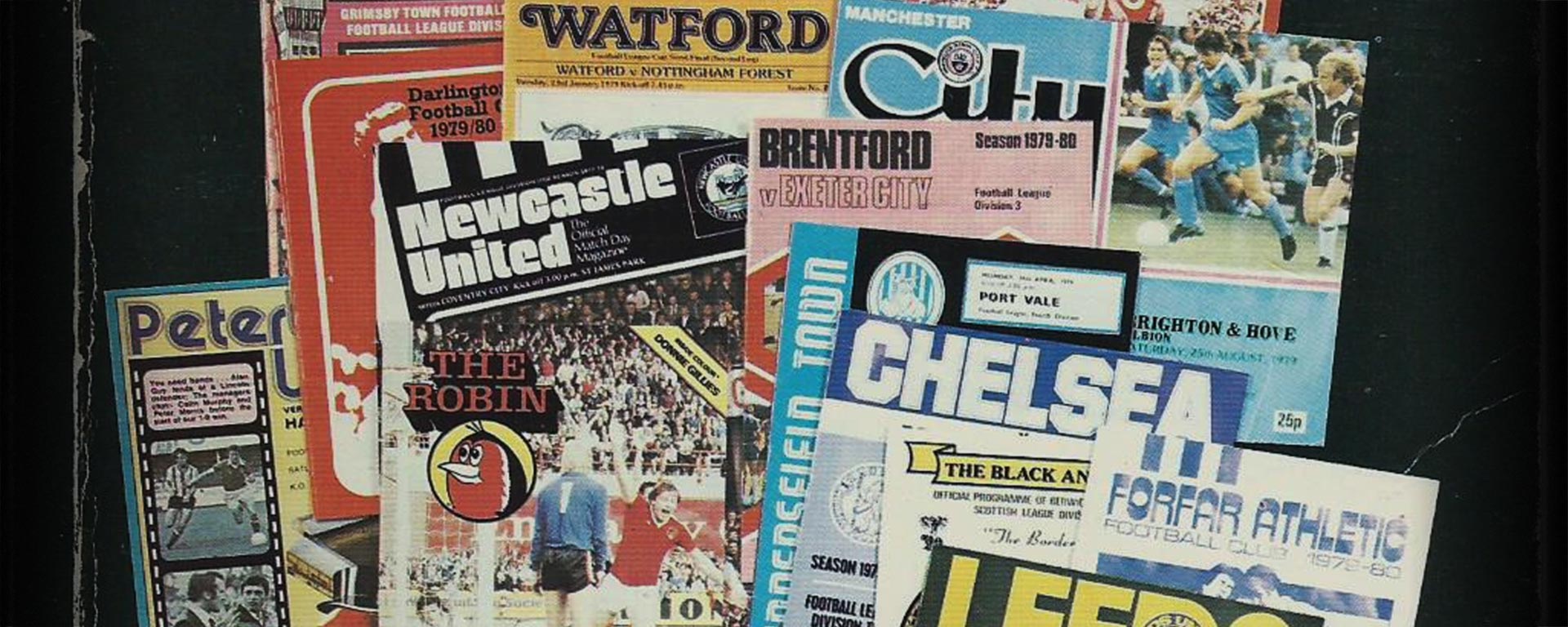It’s no secret that there was once a craze around football memorabilia, but an interest seems to be reigniting. But, many fans now aren’t sure of what to look for and how much an item they already own in storage could be worth.
For football programmes in particular, we look at which editions have sold for the most money and offer you advice on how you can get started collecting rare footie programmes today…
An insight to football match programme
When the Football League launched in 1888, the initial football programmes were published. Unlike today, the aim of a programme was to keep score and it was made up of a single sheet detailing the teams and match date.
If you’re a true football fan, you may have heard of the Villa News and Record for Aston Villa — one of the first programmes released. Soon after, the football programme took on a weightier format of between four and eight pages, while the covers became more attention-grabbing and attractive. During and after World War II, a paper shortage cut the number of programmes that clubs could produce — making any that were released very collectible today.
Initially, football programmes were pocket sized but then developed to A4. From a single sheet of basic info, the availability of saddle stitched and a growth in popularity turned football programmes into thick, glossy books crammed with trivia, statistics and high-resolution photos that fans loved to buy before every match.
More recent programmes allow readers to learn more about players on a specific team. Although today, the programme can also act as a mouthpiece for the club in question, allowing managers and players to speak to fans via interviews and club statements.
The price to pay
There are some collectors who will spend a lot of money on certain football programmes. In 2012, a family from Ipswich managed to make around £46,000 by auctioning off a set of football programmes they stumbled across in their house, which goes to show how easy it is to not realise the treasure you have sitting around your home.
You may have heard that recently, New Bond Street auctioned the oldest-known programmed from a Football Association Cup Final for £30,000 — detailing Old Etonians vs Blackburn Rovers from 1882. Similarly, in 2012, the single sheet programme from 1909 between Manchester United and Bristol City sold for £23,500.
Valuable football programmes
There’s no denying that football programmes are a significant part of a match day, but are they collectable?
Reports have suggested that the first Wembley final programme dating back to 1923 between Bolton and West Ham United is worth just £1,000. Alternatively, there’s the programme from the one and only time a non-English club lifted the FA Cup — Cardiff City vs Arsenal in 1927 — which ended with a score of 1-0 and has a value of about £2,500!
However, the 1966 England vs West Germany is worth a lot more. But be warned; there were three reprints of the original, so tracking down a bona fide version is tough. If you want to be sure you’re buying an original, check the weight and colouring — the reprints are more lightweight, while the front cover of the original is a deep, royal blue. Different paper types are also used for the team pages in the original, but not in the reprinted versions.
Cancelled game programmes are worth something too — take the Manchester United vs Wolverhampton Wanderers game in 1958 following the Munich air disaster. This can go to auction for around £10,000. However, once rescheduled, another programme was created where the club showed respect to those involved in the disaster by leaving the team page blank.
Top tips for collectors
Make sure you get a good deal when it comes to football programmes, by keeping in mind:
- Age — anything over 50 years old is most collectible.
- Rarity — if there are many available, this will bring the value down.
- Popularity — programmes with an iconic footballer on the cover or detailing a famous match are the most prized and valuable.
- Condition — creases, missing staples and water damage all harm the programme’s price, so ask for a photo before you pay.
There are a lot of programmes that are valuable, so it’s worth collecting them at any match you go to — especially if it also specifies a special event, such as the last time a player plays. Also, certain teams typically hold greater monetary value than others when it comes to programme collecting — although, programmes from your team’s past will be more personally valuable to you. Sides such as Manchester United, Chelsea, Liverpool, Spurs, West Ham, and Arsenal are all highly sought after and are worth keeping an eye out for if you want a particularly valuable item. The Football Programme Centre is also a good source of advice if you’re keen on becoming a serious collector.
Why not keep yourself football-focused until the new season kicks off by learning more about the hobby and start collecting yourself?
Where The Trade Buys are print experts and retailers, based online and in the UK. As well as offering bollard signs, they specialise in promotional and office print services for small and large businesses.
Sources:
https://www.bbc.co.uk/news/uk-england-suffolk-18399222
https://www.antiquestradegazette.com/news/2013/auction-record-for-any-football-programme/
https://www.justcollecting.com/miscellania/top-5-most-fascinating-football-programmes
http://www.footballprogrammecentre.co.uk/football-programme-guide.php

